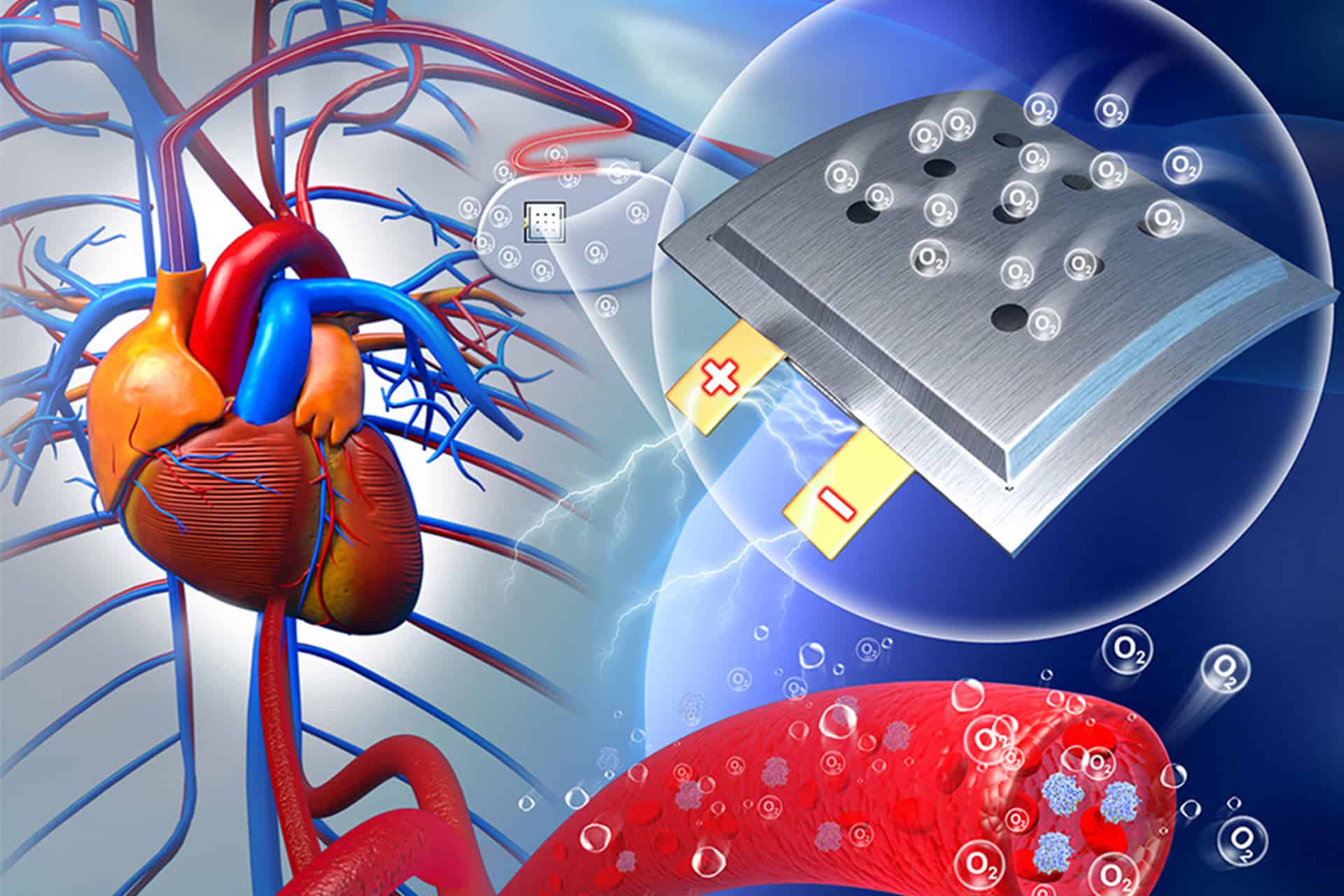
Oxygen is the fuel for much of life on Earth. But did you know that same oxygen in our bodies could one day power batteries in medical implants? A new study has revealed a novel sodium-oxygen (Na-O2) battery that does just this.
A problem with medical implants is that doctors have to perform invasive surgeries to replace their batteries from time to time. This newly proposed Na-O2 battery, however, would run on our oxygen — it would recharge itself.
“We propose a novel Na-O2 battery design for in vivo applications that utilizes a stable sodium-based alloy as the anode and oxygen from body fluids as the cathode component. This battery demonstrates promising potential as an energy source for powering micro-implantable electronics,” the study authors note.
How an oxygen-driven battery works
If there is one substance that is abundant in mammal bodies, it is oxygen. Oxygen is constantly being replaced via respiration and is key to many energy-centered biological processes. So, how could we use this very bioavailable molecule in a battery? The researchers at Tianjin University of Technology were trying to find the answer to this question.
“If we can leverage the continuous supply of oxygen in the body, battery life won’t be limited by the finite materials within conventional batteries,” Xizheng Liu, one of the study authors and a professor of energy materials and devices at Tianjin University, said.
They wanted to develop a safe, feasible, and efficient oxygen-powered battery, and the only way to do this was to use components and chemicals compatible with living systems.
With this in mind, they used a sodium-based alloy as the anode. Sodium is already integral to the human diet and body, playing a key role in maintaining nerves, body fluids, and muscles. All these factors make it an ideal biocompatible anode.
As the separator, the researchers employed nanoporous gold (NPG), a material that has pores a thousand times smaller than the width of a human hair. NPG is already used in many biological applications because of its biocompatibility and high stability.
After creating their novel battery, they encased this arrangement in a soft polymer. They then surgically implanted it under the skin in rats, which served as model animals for the experiment.
“After 24 hours of implantation, an unstable discharge voltage plateau was observed at 1 and 2 μA/cm2 indicating that only a small amount of succus or blood entered the cathode compartment and enabled a continuous O2 supply,” the study authors note.
“By further extending the implantation for 2 weeks, stable voltage plateaus of approximately 1.4 and 1.3 V were obtained at 1 and 2 mA/cm2, respectively, with a maximum power density of 2.6 μW/cm2. Similarly, after 4 weeks of implantation, the discharge voltage plateaus remained at approximately 1.3 and 1.2 V at 1 and 2 μA/cm2, respectively, indicating a steady and continuous O2 supply from the body fluids.”
For the first time, the researchers proved that internal oxygen could provide stable energy input to batteries. However, the output achieved during the study won’t be enough to power any medical implant. For instance, a pacemaker runs on a battery capable of generating 2 to 5 volts of output.
Therefore, further research is required to improve the Na-O2 battery performance, according to the study authors.
Showing great potential
When it comes to safety, the Na-O2 battery might be one of the most secure power solutions for medical devices. During the study, it didn’t cause any side effects in the model animals, and none of the byproducts it released were harmful to human health.
“The Na+ and OH ions produced during the discharge process enter the blood without causing electrolyte disturbance. The metabolism of substances in the body did not result in any abnormalities in the liver and kidney. The excellent bio-compatibility of the battery indicates immense potential for practical applications and has the potential to revolutionize the field of implantable batteries,” the researchers said.
The researchers also noticed that the blood vessels that suffered damage when they implanted the battery regenerated after some time around the implant. This surprising development hints that the Na-O2 battery can also be used for monitoring wound healing, according to Liu.
“While several fundamental studies and intrinsic challenges remain to be tackled, the Na-O2 battery is still highly promising and can spark a new revolution in the field of implantable devices, leading to the development of new methods for the treatment of various diseases.”
The study is published in the journal Chem.






